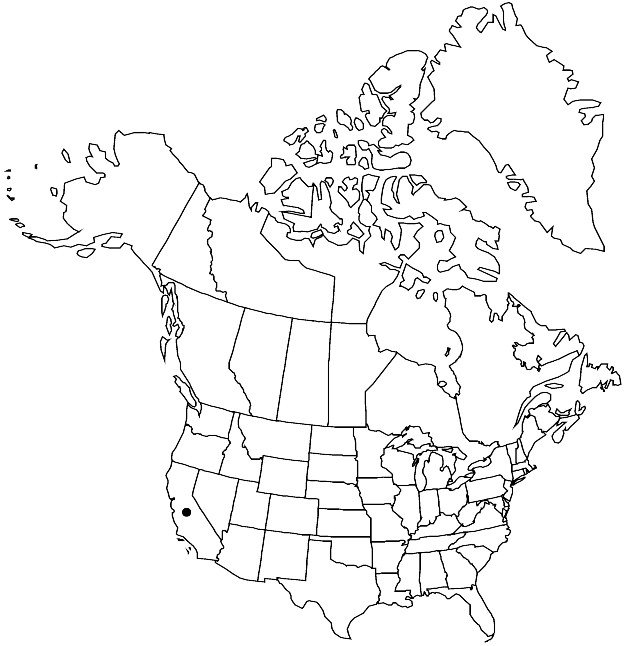Streptanthus barbiger
Pittonia 1: 217. 1888.
Annuals; glabrous, (sometimes sepals pubescent). Stems branched basally, (0.7–)1–6.7(–8) dm. Basal leaves (soon withered); not rosulate; petiolate; blade oblanceolate or oblong to lanceolate, 2–5(–7) cm (5–15 mm wide), margins remotely dentate. Cauline leaves: blade linear to linear-lanceolate, (1.5–)3–9(–10) cm × 0.5–2 mm (smaller distally), base not auriculate, margins entire. Racemes ebracteate, (lax, often secund). Fruiting pedicels ascending to divaricate, 1–2.5(–4) mm. Flowers: calyx urceolate; sepals (erect), green to purplish, (ovate), 4–6 mm, slightly keeled, (apex recurved, glabrous or hirsute, trichomes retrorse); petals white (abaxial pair with purplish veins), 6–9 mm, blade 2–4 × 1.5–2.5 mm, margins not crisped, claw 4–6 mm, narrower than blade; stamens in 3 unequal pairs; filaments: abaxial pair (connate to middle), 4.5–5.5 mm, lateral pair 2.5–3.5 mm, adaxial pair (connate, strongly recurved, purplish), 7–9 mm; anthers: abaxial and lateral pairs fertile, 1.5–2.2mm, adaxial pair sterile, 0.4–1 mm; gynophore 0.3–1 mm. Fruits divaricate-ascending to reflexed, slightly torulose, curved or, rarely, straight, slightly flattened, 2–6(–7) cm × 1.2–1.5 mm; valves each with obscure midvein; replum straight; ovules 22–38 per ovary; style 0.1–0.7 mm; stigma entire. Seeds narrowly oblong, 1.3–1.8× 0.6–0.8 mm; wing (0–)0.1–0.25 mm wide distally, (narrower at margin or absent). 2n = 28.
Phenology: Flowering May–Aug.
Habitat: Serpentine ridges and barrens, openings in chaparral, cypress or pine-oak woodlands
Elevation: 200-1500 m
Distribution

Calif.
Discussion
Streptanthus barbiger is distributed in Lake, Mendocino, Sonoma, and Tehama counties. Its holotype has pubescent sepals; most of the collections examined have glabrous ones, though plants with pubescent sepals occur throughout the species range. R. E. Buck et al. (1993) suggested that the two forms apparently represent distinct taxa. This is highly unlikely because both forms occur sometimes in the same population, as evidenced by Breedlove 5145 (GH).
Selected References
None.